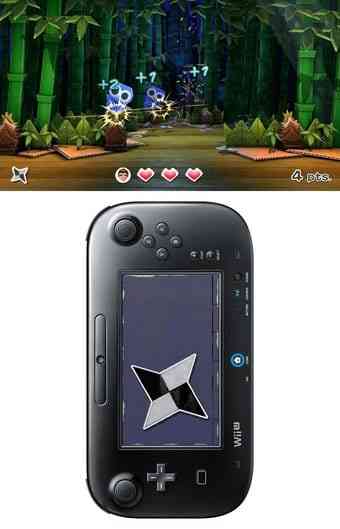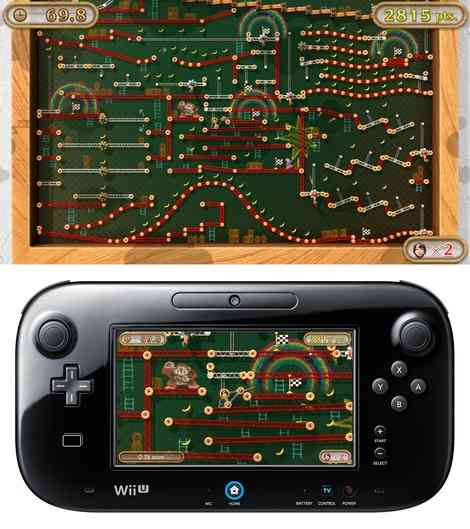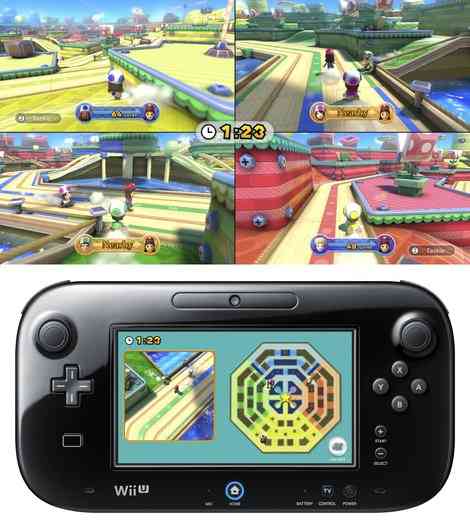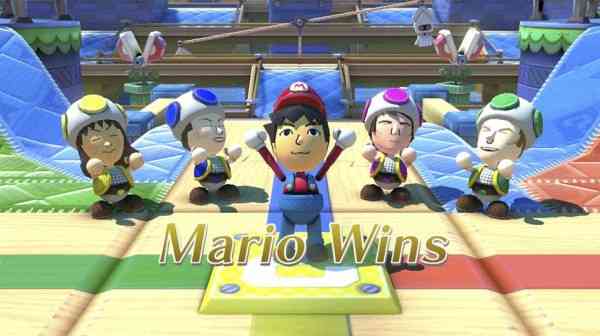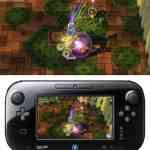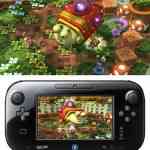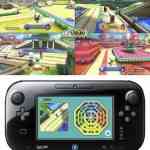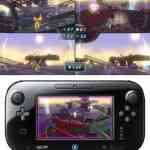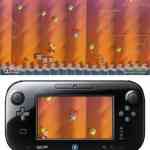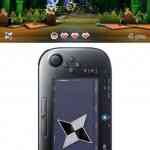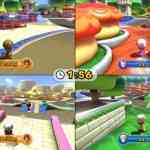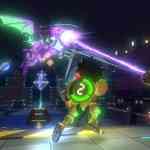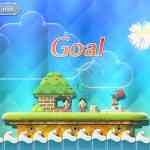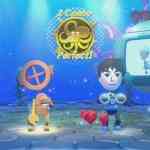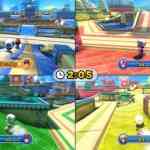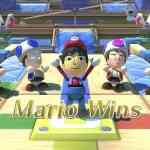If you were lucky enough to obtain the Wii U Deluxe Bundle, or decided to make Nintendo Land of your first Wii U game purchases, then you probably already know that this game is considered the “Wii Sports” of the Wii U. It is “THE” game that defines to the world how the Wii U controller can, and should, be used to help expand how users play games. If you are reading this review, then I suppose you are now asking the question “Well, does it?” If you really want to know, then read on…
The concept behind Nintendo Land is that the player, represented by their Mii, has arrived at a theme park filled with attractions. These attraction are based on such beloved and well known Nintendo franchises as Mario, Zelda, and Metroid, and some lesser known franchises such as F-Zero, Balloon Trip, and Animal Crossing. When you first arrive you start out in a circular plaza and meet the game guide, Monita, a small bot that helps explain how the plaza and games control as you progress through the game. Along the outer edge of the plaza there are 12 gates, each one taking you to one of the attractions. As you approach each attraction you will find a sign that indicates if the game is single-player or multi-player affair. One nice thing to note here is that the multi-player games scale based on the number of players and it will add extra “Monita-bots” when needed or make minor revisions to the rules that help balance out the gameplay.
Nintendo Land also offers a lot of replayability in various forms. Each attraction offers a high score list that may keep coming back not just to only beat your own scores but those of other players on your system. You will also earn in-game trophies, so if you are a completionist you may want to keep playing until you finally earn that last elusive gold trophy. Along with certain in game goals, your Miis will also earn stamps. After you finish playing each attraction you will also earn coins based on your score, the number of participants, and a possible 2x bonus that is randomly placed on attractions. You can then use these coins in Monita’s ‘Plinko’ style mini-game to earn decorations for your plaza.
As I noted earlier, there are 12 mini-games for you to play. A quick breakdown of those that are included in Nintendo Land are as follows:
Takamaru’s Ninja Castle – 1-player – Monita has been captured! You hold the Wii U GamePad flat and flick towards the TV to throw shurikens at the screen. The art style of this game is done very well with everything looking like origami like. The strength of your swipe determines how quick your shuriken reaches its target too.
Captain Falcon’s Twister Race – 1 player – Follow a top-down view of the racetrack on the GamePad and guide Captain Falcon through the course by rotating the GamePad back and forth. Most who play this single player mini-game should enjoy it as I didn’t mind it at all.
Yoshi’s Fruit Cart – 1 player – Draw the path Yoshi must follow to collect all of the fruit in the level. The catch? The fruit is shown on the TV but you must draw the path on the GamePad. Bon Appetit!
Octopus Dance – 1 player – Dance Dance Revolution…without any revolution. Rotate the analog sticks and tilt the GamePad to follow the dance moves of the instructor. The game will force you to change perspective from the GamePad to the TV by rotating your characters 180 degrees, but the overall experience, especially being single-player, leaves this attraction definitely lacking.
Donkey Kong Crash Course – 1-player – One of the most frustrating (in a good way) games in the collection. Tilt, press, and blow your way through an agility obstacle course to save Pauline from Donkey Kong. If you make it to the end, you definitely get that sense of video game accomplishment.
Balloon Trip Breeze – 1 player – Balloon Fight’s Balloon Trip mode on steroids. Using the GamePads touchscreen, you are in control of the “breeze” that will propel you through the floating obstacle course. As you progress, the game difficulty increases as the game adds more obstacles and extra weather effects to literally blow you off course. One of the better “high score” attractions in the collection.
Luigi’s Ghost Mansion – 2-5 players – The proverbial cream of the attraction crop, and one of the quintessential showcases of Nintendo’s ideal of asymmetric gameplay. In my night of gaming with friends, we came back to this game over and over again. One character plays using the GamePad and can see the whole level, including all the “Luigis”. On the TV, the Luigis see the darkened level with no ghost and must track it down. In order to win the game, the player who is the Ghost needs to make all of the characters faint by grabbing them, or any or all the other players, who are the Luigis, must shine enough light on the ghost to deplete it’s health (make sure you keep your batteries topped up). The only detection method is the rumbling of the Wii Remotes which alert you the ghost is near, the more rumbling, the closer the ghost is. We found the game is a bit skewed for the ghost, but the frantic screams for reinforcements as your Wii Remote rumbles like crazy was enough fun to keep us coming back for more.
Mario Chase – 2-5 players – One person plays as Mario on the GamePad, and they get a top down view of the map, while up to four others play as Toads on the TV. The goal is for either Mario to avoid capture by staying as far away from the Toads as possible, or for the Toads to work together to corner Mario and tackle him. I enjoyed the fact that I could team up and hunt the “Red Hatted Plumber” down, tackling the long standing do-gooder.
The Legend of Zelda: Battle Quest – 1-4 players – Zelda Co-op on a ‘semi-grand’ scale. One player uses the GamePad and becomes an archer, holding GamePad in front of them while moving it around to change the viewpoint to aim their bow and arrow. The other players use Wii Remotes as swords and are the ground support. The main drawback of this one is that the game is completely on rails so movement is severely limited and you may not appreciate where and when you move. Overall this “attraction” is pretty deep and proved to be a lot of fun.
Metroid Blast – 1-5 players – In this attraction the player with the GamePad takes control of Samus’ ship, blasting at enemies from the sky, whereas players with Wii Remotes take control of ground based characters blasting enemies with their trusted arm cannons. This is one of the most traditional style games in the package and one which may be a bit difficult for less seasoned gamers whether you are controlling the ship or running and gunning below. One bonus to this game is the variety of gameplay, which includes cooperative and competitive modes. Taking all of this into account makes this one of the best games for the “hardcore” gaming crowd in this package.
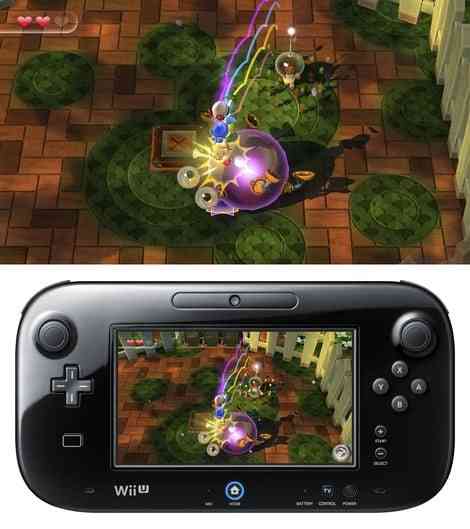 Pikmin Adventure – 1-5 players – Although Pikmin 3 is still missing in action, this mini-game makes for a suitable quick-fix replacement for the time being. The player using the GamePad takes control of Captain Olimar plus a few select Pikmin, while other players using Wii Remotes become additional Pikmin. Once you set out on your adventure you progress through multiple levels of increasing difficulty by attacking enemies and breaking down barriers along the way. To help with your progression, your characters level up by drinking nectar that spills from some of your environmental spoils. The game also offers a competitive mode requiring players to collect as much candy as possible.
Pikmin Adventure – 1-5 players – Although Pikmin 3 is still missing in action, this mini-game makes for a suitable quick-fix replacement for the time being. The player using the GamePad takes control of Captain Olimar plus a few select Pikmin, while other players using Wii Remotes become additional Pikmin. Once you set out on your adventure you progress through multiple levels of increasing difficulty by attacking enemies and breaking down barriers along the way. To help with your progression, your characters level up by drinking nectar that spills from some of your environmental spoils. The game also offers a competitive mode requiring players to collect as much candy as possible.
Animal Crossing: Sweet Day – 2-5 players – Another great asymmetric attraction. The player using the GamePad controls two police officers, while the other players use Wii Remotes to control animal characters. The animals have to gather as much candy as possible while the police officers are trying to stop them. The GamePad displays both police officers and each analog stick controls one of the officers. This can be confusing and disorienting at first; however, once you get used to it you can become quite good at controlling your map by separating your officers a bit to view more of the map and then closing in on your targets. If you are playing with 2 people, the animal player must stash the candy in bins. In a much more interesting game dynamic however, if you are playing with more than 2 people the carry rules apply and the animals must collectively be carrying a certain number of candy. Beware, the more candy you are carrying, the slower you move, so you have to coordinate with other players in order to balance out how much candy each person is carrying. This “attraction” proved to be one of the most fun and communicative games we played. If you want to get past the officers you have to work together to acquire the larger stashes of candy, which requires teamwork.
There is a definite nice mix of games in Nintendo Land and there should be something for everyone. Visually speaking, if you have played any Nintendo franchise game then you know what to expect. The games are suited for each attraction and the visuals are what can best be explained as “Nintendo-esque”. There is little to tax the Wii U hardware, but the simplicity is charming and the colours are vibrant and bright. You can tell everything is in HD too given the clean lines and sharp focus of the on-screen action. As for the sound, there is not much I can say here. It is cheery, boppy, and relevant to each level, as are the sound effects. Again, it does not do anything to push any of the Wii U hardware, but it manages to do the job well.
One thing I found during my time with Nintendo Land is that the initial experience of the Wii U in general is far different than when the original Wii was released six years ago. Although the controller is great, it is not as intuitive as the Wii Remote. I do not necessarily mean this in a bad way, but with the extra functions of the controller (touchscreen, gyroscopic sensor, dual analog sticks, microphone, etc.) there is more thought involved in the moves that you make. You most likely will not be getting your grandparents in on the action like you did with the Wii. All of this being said, Nintendo Land still proves to be a great start that manages to showcase some of the gameplay possibilities with the GamePad controller and what Miiverse can be all about. The integration with the Miiverse adds an interesting element as you can see other players moving around your plaza and see messages from them about the attractions they play and see their game statistics.
Well some may complain that Nintendo Land is not a full online experience, the game is supposed to showcase the possibilities of new ways to interface with a console, and it does that. At the same time, it also manages to bring together friends and family in a way that I find not possible with online gaming. If this review hasn’t spelled it out for you already, there is a lot of content and potential included in this package to make it more than worth your while and keep you coming back for more as Nintendo Land is a pretty darn good game. No “fast-passes” required this theme park either.
